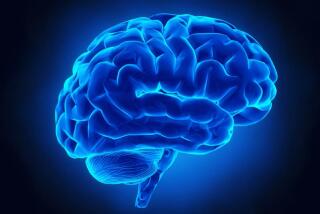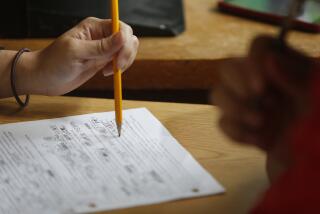Remembrance or revision? Brain study shows memory misleads
- Share via
Memory can be altered by new experience, and isn’t nearly as accurate as courtroom testimony might have us believe, a new study suggests.
The results suggest a cheeky answer to the question posed by comedian Richard Pryor: “Who you gonna believe: me, or your lyin’ eyes?”
Turns out, Pryor was onto something. The brain behind our eyes can distort reality or verify it, based on subsequent experience. And somewhat paradoxically, the same area of the brain appears to be strongly involved in both activities, according to a study published online Tuesday in the Journal of Neuroscience.
Northwestern University cognitive neuroscientist Donna J. Bridge was testing how memory is either consolidated or altered, by giving 17 subjects a deceptively simple task. They studied the location of dozens of objects briefly flashed at varied locations on a standard computer screen, then were asked to recall the object’s original location on a new screen with a different background.
When subjects were told to use a mouse to drag the re-presented object from the center of the new screen to the place where they recalled it had been located, all got it wrong, by an average of about 3 inches.
When the same subjects then were given three choices – the original location, the wrong guess and a neutral spot between them – 16 of 17 dragged the object to the incorrectly recalled location, regardless of the background screen. Their new memory was false.
But it gets trickier still. When subjects were instead told to drag the object from center screen to a pre-selected spot on the new background, then were asked to move it from a central spot to where they recalled seeing it originally, they got the original position right at an uncanny rate. (They were not told the pre-selected spot was wrong, and its misplacement distance roughly matched that of errors measured in the previous trials.)
Faced with the three position choices, these same subjects also matched the correct original position, regardless of screen background.
All the while, measures of brain activity showed that the same area of the hippocampus was highly active both for maintaining the “correct” memory and confirming a newly associated “false” memory.
“That overlapping brain activity was pretty shocking to us,” said Bridge, a postdoctoral student at the university’s Feinberg School of Medicine. “The idea is that whatever is most important to you right now, the hippocampus is responsible to either maintain a stable representation or change it.”
The results seem to contradict common notions that we are prone to altering accounts of the past when prompted with false information. On the contrary, the hippocampus’ well-documented ability to sort between present reality and a stored memory held up.
Yet a similar calculation could underlie the error. The new, but wrong, position became associated with the new background, and when the background changed, the hippocampus seemed to sort through a false database.
There could be good reason for our brains to act this way, Bridge said. Life requires us to update aspects of our memory on a constant basis. In some sense, the benefits of that function outweigh the pitfalls.
“It seems like a basic function of memory is that it is built to change,” Bridge said. “It’s built to adapt to what is currently important to us.”
You might think of it this way: An evolving hominid who could regularly update where tigers lurked or food could be found would have a higher chance of surviving to pass on genes than one who stubbornly insisted they were found in only one spot.
On a more modern level, Bridge offered, we find it hard to remember how someone familiar looked in the past, and tend to project current appearance onto memories. That would clarify our shock at how “different” the person looks in an old wedding photo, for example.
“I think that we just don’t notice we do this all the time,” Bridge said. “It’s a subtle practice. We think it’s adaptive. As you encounter new situations, new environments, it’s good to use your past to inform the future and present; sometimes that means updating your past.”
The results could have implications for those struggling with the associations of traumatic memories, since many therapies focus on changing context. But they also could add reasonable doubt to eyewitness testimony, particularly in circumstances where the witness could be susceptible to updating.
Perhaps Richard Pryor was wise, then: With time and opportunity, he counted on “updating” the memory of that indiscretion you just saw.
[For the Record, 9:39 a.m. PST Feb. 5: A previous version of this post said that 16 of 17 subjects in the first described experiment failed to drag an object to the same location where they had seen it in a previous presentation. All of the subjects failed that test. In subsequently choosing among three locations, 16 of the 17 subjects chose incorrectly.]







